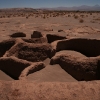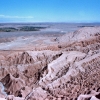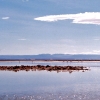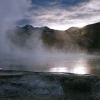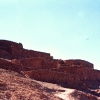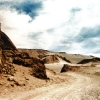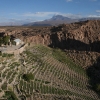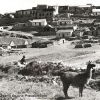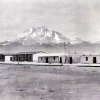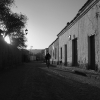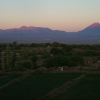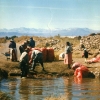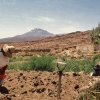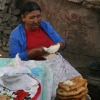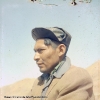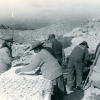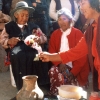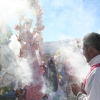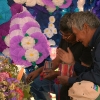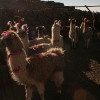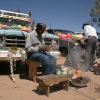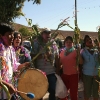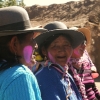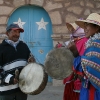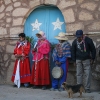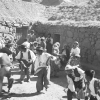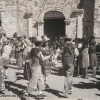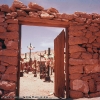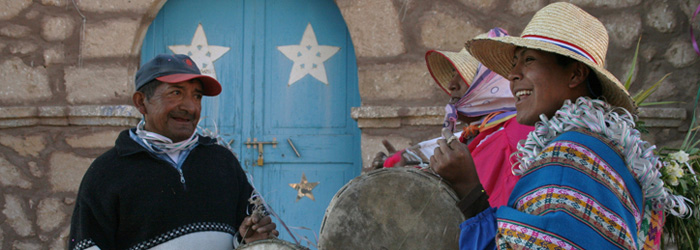Settlement pattern
The Atacameños’ surroundings are organized along economic and social lines. The environment has three components: the chacra (small agricultural plot), consisting of the permanent dwelling and farming terraces; the campo (field), where livestock graze and a small lodge is kept for temporary shelter; and finally the cerro (mountain), the wilderness area where locals collect plants and firewood, hunt, and graze llamas and alpacas.
Settlements are dispersed, with farmland surrounding the village and grazing lands further afield. Dwellings are rectangular in shape and made of stone and/or mud, with beams of carob or cactus wood and a straw roof. Small circular adobe compartments are installed above the ceiling to store maize, potatoes, beans, quinoa, and carob or chañar fruit. When a new house is built in the springtime, it is roofed with fresh straw and reeds. When the task is finished, a cross tipped with red and white wool is placed on top to ward off evil.
Atacameño settlement patterns also include complex agricultural terraces and irrigation canals, which are the foundation of their agricultural system.



